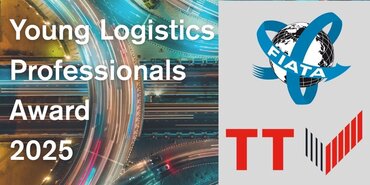TT Talk - Asset management - a case for drones

Ports, terminals and similar facilities use a wide range of handling equipment assets to serve the global supply chain in the movement and storage of cargo. Given the nature of the operations, these assets regularly see significant wear and tear over their service-life. Therefore, to ensure safe and efficient operations, managers must be able to make informed decisions based on the condition of their assets.
An asset manager needs to build knowledge of asset performance, and plan maintenance interventions appropriately, which makes the quality of the data gathered vital. However, given the typical location of these assets, being over/near water or close to busy operations – together with their sheer size – access can present danger.
The use of drones within asset management strategies offers significant benefit in terms of safety by reducing the requirement to place personnel in high-risk locations. Likewise, there are tangible benefits in terms of the quality of the data that can be gathered through the utilisation of this technology.
A well-managed drone operation, adhering to sound industry practice and relevant regulatory controls, can prove beneficial. However, the implementation of in-house or third party drone capabilities within a port and terminal environment needs to be done carefully to avoid introducing new risks.
A well-managed drone operation, adhering to sound industry practice and relevant regulatory controls, can prove beneficial
Background on drones
Drones, also known as UAVs (uncrewed aerial vehicles), are being developed at a rapid pace for deployment in a wide array of industries across the globe. There is rapid adoption for anything from asset inspection to support for emergency services. It is this growth and development which is unlocking potential for the use of drones within the ports and terminal industry.
Drones, with the correct equipment, training and management, can not only reduce risk in your facility – for example avoiding the need to work at height – but also may improve operational efficiency due to the ease of deployment and the minimal disruption to operations.
Drones...can not only reduce risk in your facility...but also may improve operational efficiency
However, there are several regulatory requirements that must be fulfilled to get your own drone operation ‘off the ground’. The process flow below reflects UK requirements; you will need to engage with your own national aviation authority to verify applicable regulatory requirements.
Fortunately, as an expanding market, there are many local providers with experience in delivering appropriate training in their respective regions to assist in getting drone operations up and running.
Drone implementation process flow

Asset Management Use-cases
As already mentioned, the use of drones can remove the need to place people in these high-risk areas. Nevertheless, care is required to ensure the data collected are of sufficient quality for the asset managers to make decisions over the service life of the asset. Here is a summary of the tools typically able to be deployed by drones.
Inspection & Survey
Inspection is pivotal in asset management, preserving and optimising resources. Drones can be employed to monitor asset condition proactively, enhancing safety and reliability. Inspections provide data for informed decision-making, resource allocation, maintenance scheduling, and upgrades. Since port assets represent significant investments, inspection is essential for sustainable and cost-effective asset management.
Photogrammetry
Photogrammetry uses the images taken by the drone camera, the global positioning system (GPS) data and using specialist software to produce accurate 3D images and analytics.
The process involves flying a drone over the area or asset to be surveyed, capturing images at set intervals. The number of photographs required is large, due to the extent of the photograph overlap required (typically 80%). This provides the processing software the data necessary to determine the position of the individual pixels, enabling the 3D data to be produced.
Where this technology really comes into its own is the ability to survey large or awkward assets (or cargoes) accurately. Further, the data are enriched compared to the traditional approach, since the 3D model can be interrogated using propriety software to extract dimensional or volume data. By running a series of such surveys, it is possible to compare the information over time to identify degradation of the assets or changes in volume.
LIDAR
LIDAR (light detection and ranging), produces a similar data output to photogrammetry, but uses quite different methods to capture the data. Where photogrammetry involves taking images and processing to determine the three-dimensional location of the individual pixels, the LIDAR uses laser technology and the measurement of rebounding light points.
LIDAR does lend itself to coverage of larger areas, and is more of a surveying tool which has the ability to collect enhanced data in heavily wooded areas. Consequently, this technology may have limited application in the typical facility environments.
Thermal imaging
The use of thermal imaging provides an ability to detect possible issues that are not visible to the naked eye. This may give some data enrichment over the use of the regular cameras.
Already used in other industries, this technology can provide insight into possible electrical overheating faults, allowing engineers to investigate and rectify before the issue escalates into an asset fire. Likewise, with the expansion in the use of photovoltaic systems to generate electricity and the use of lithium battery technology to store this energy, it is likely that thermal imagery may assist early detection of potential issues.
Conclusion
The use of drones in the port industry is expanding quickly, with the industry realising multiple benefits of deployment. The implementation of the technology can at first sight appear daunting, but with a defined use-case and the support of appropriate drone industry specialists, the deployment of drones within the port and terminal environment can follow a logical roadmap.
The use of drones is not only expanding in the port industry, but also within wider industry, in which a significant amount of research and development is underway. Therefore, we are likely to see ever-increasing use-cases and technological advances over the coming years.
Drones can eliminate placing the workforce in dangerous environments, while gathering enhanced data at regular intervals. This technology simply cannot be ignored within the port industry.
-
If you would like further information, or have any comments, please email us, or take this opportunity to forward to any others who you may feel would be interested.
Documents
TT Talk Edition 304 (Chinese) (856 kB) 20/11/2023
- Author
- Neil Dalus
- Date
- 07/11/2023





